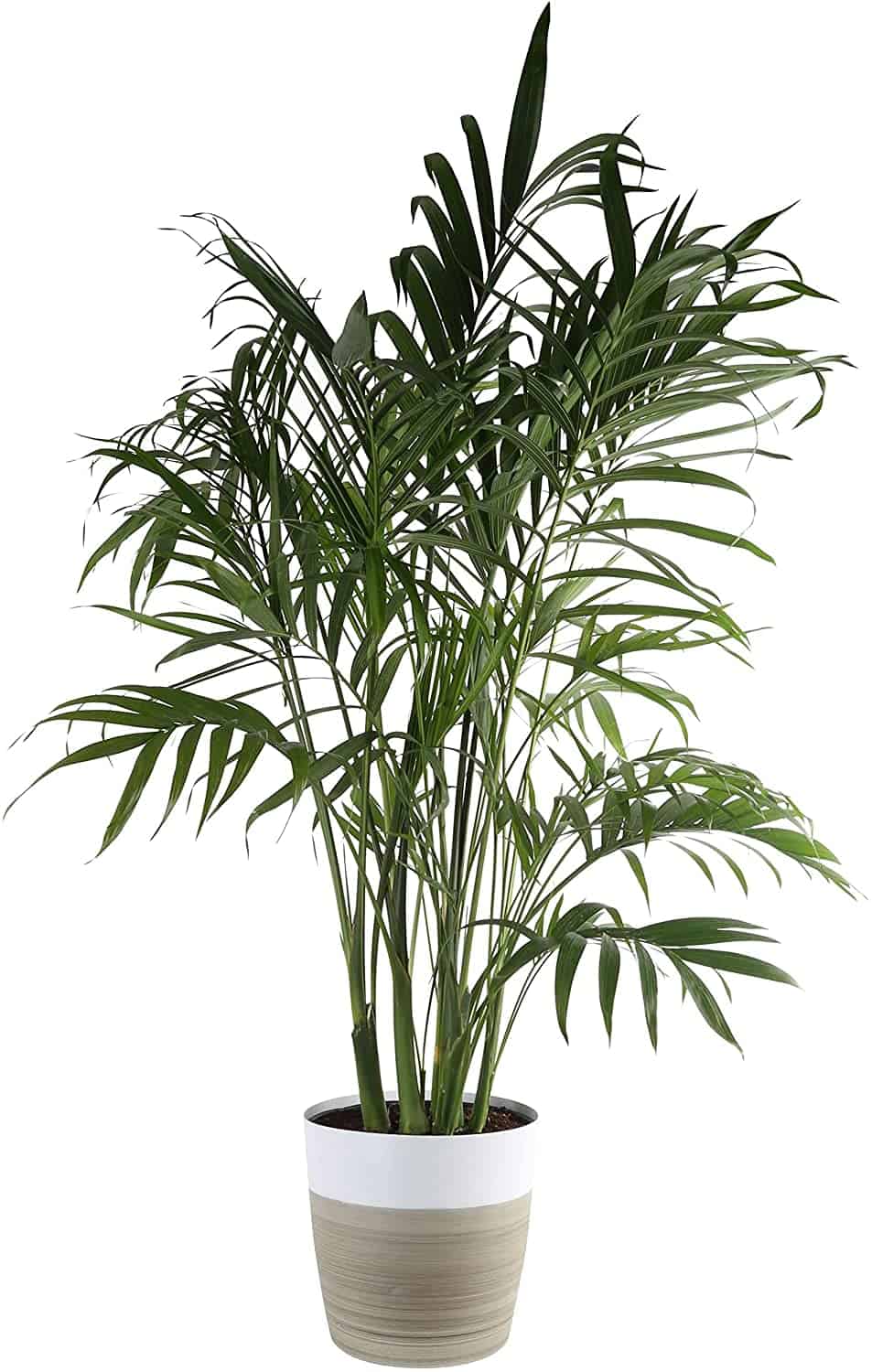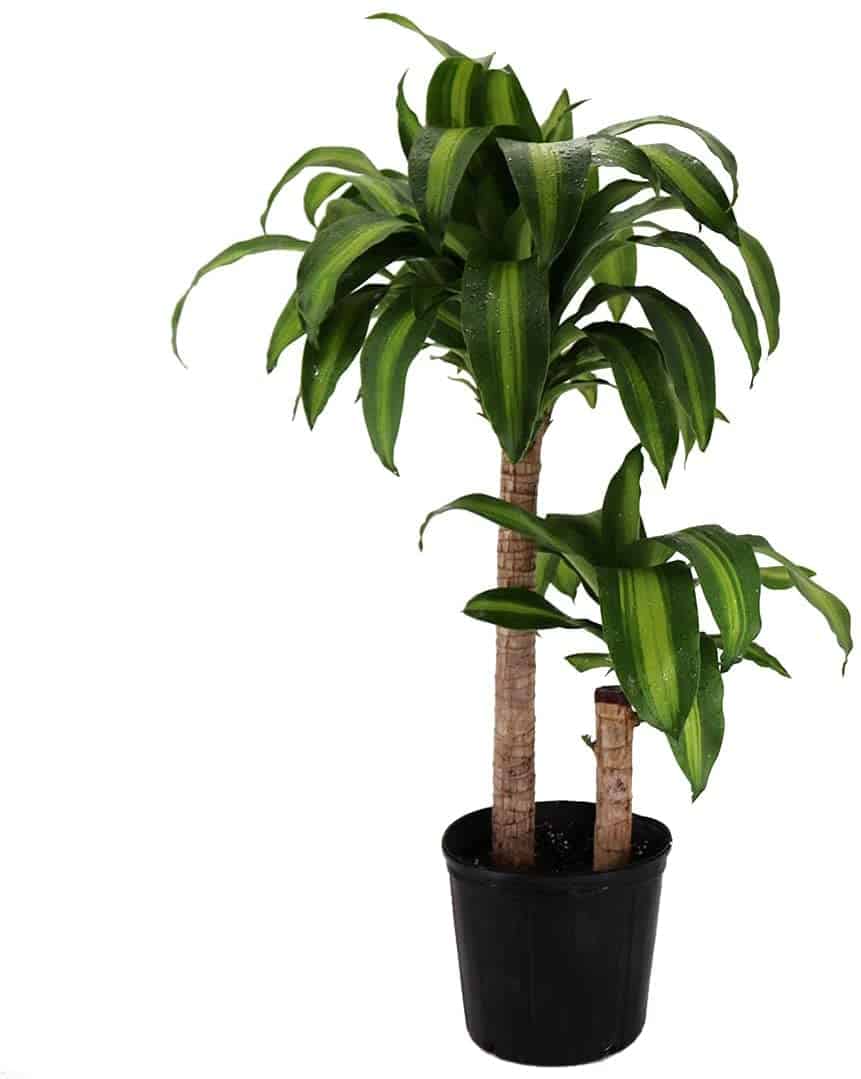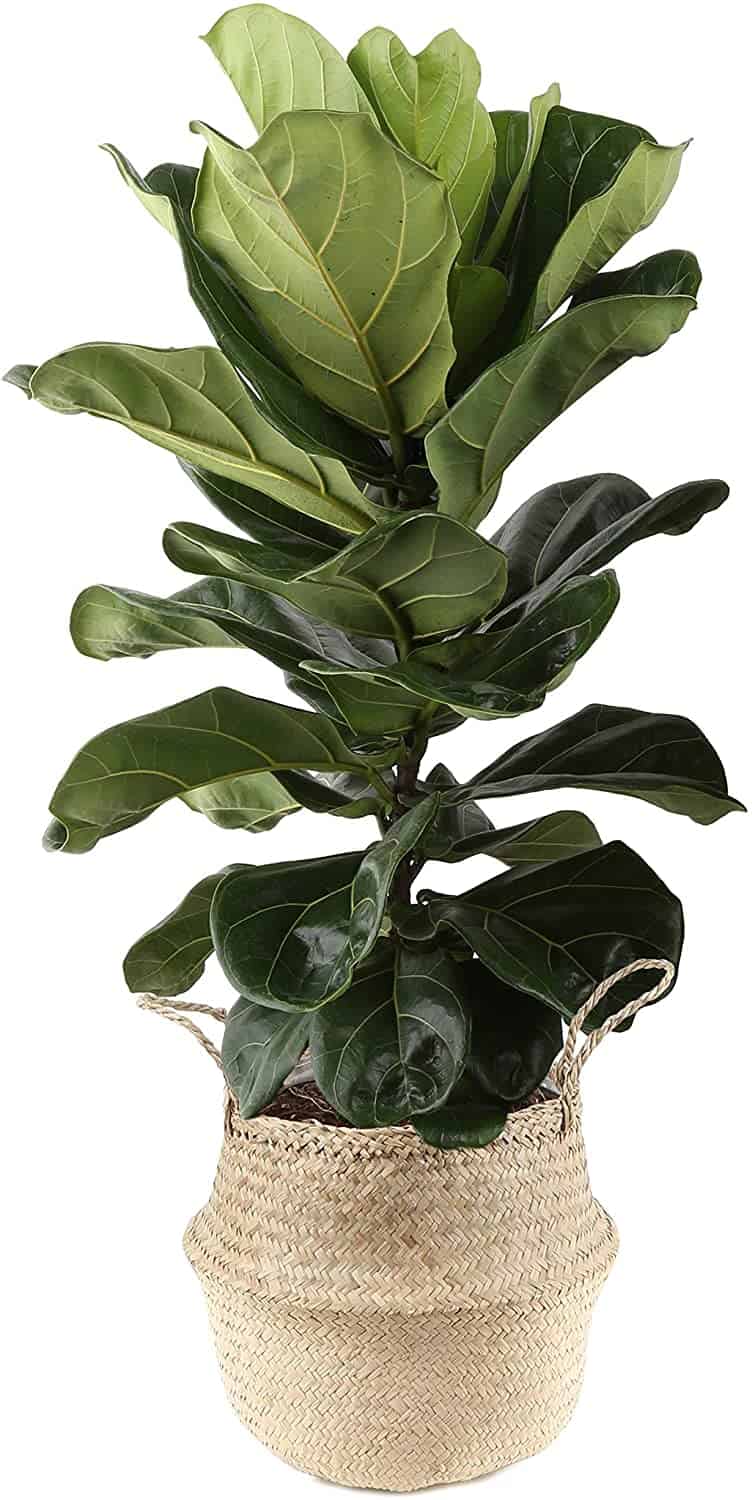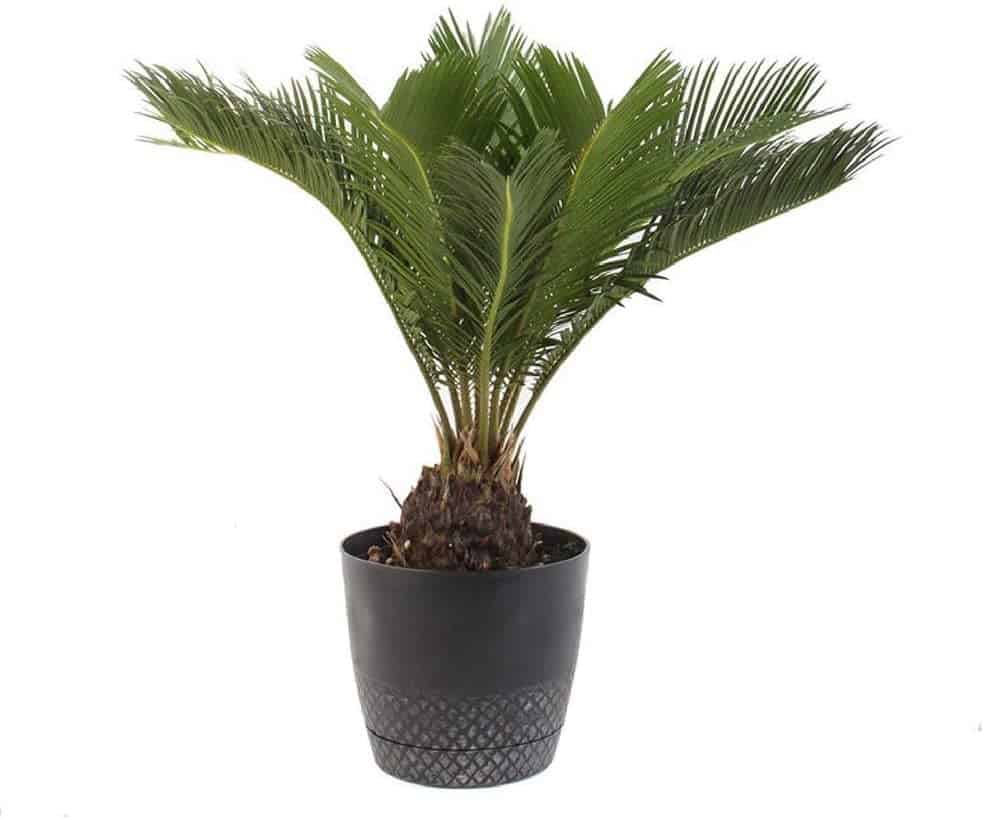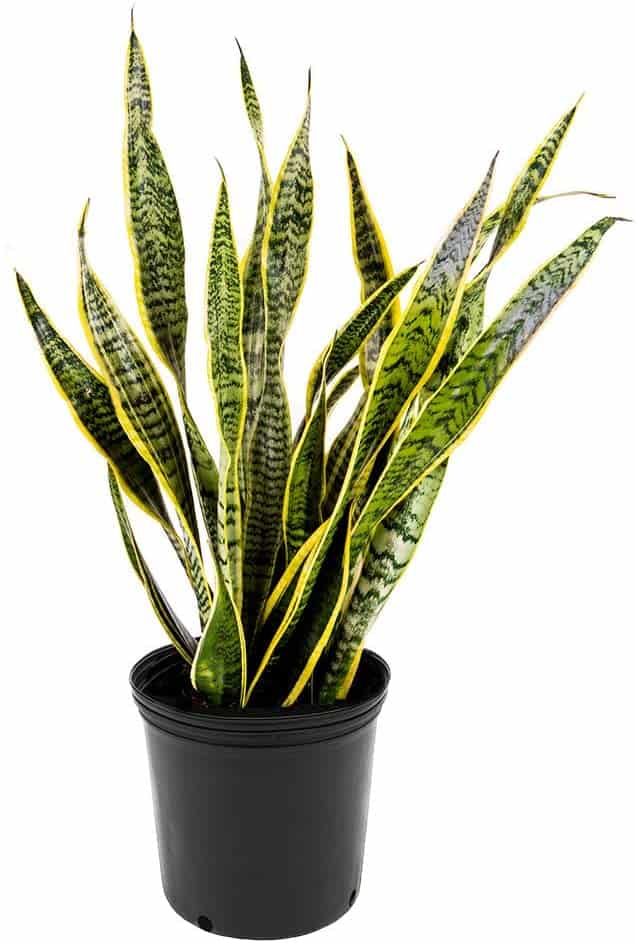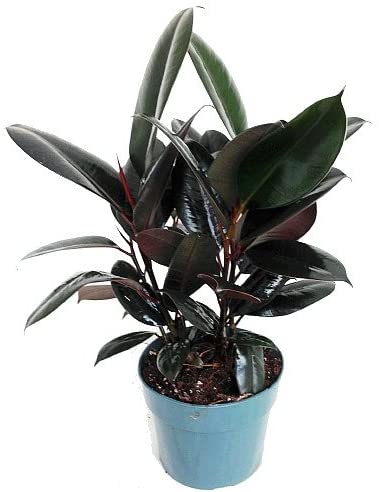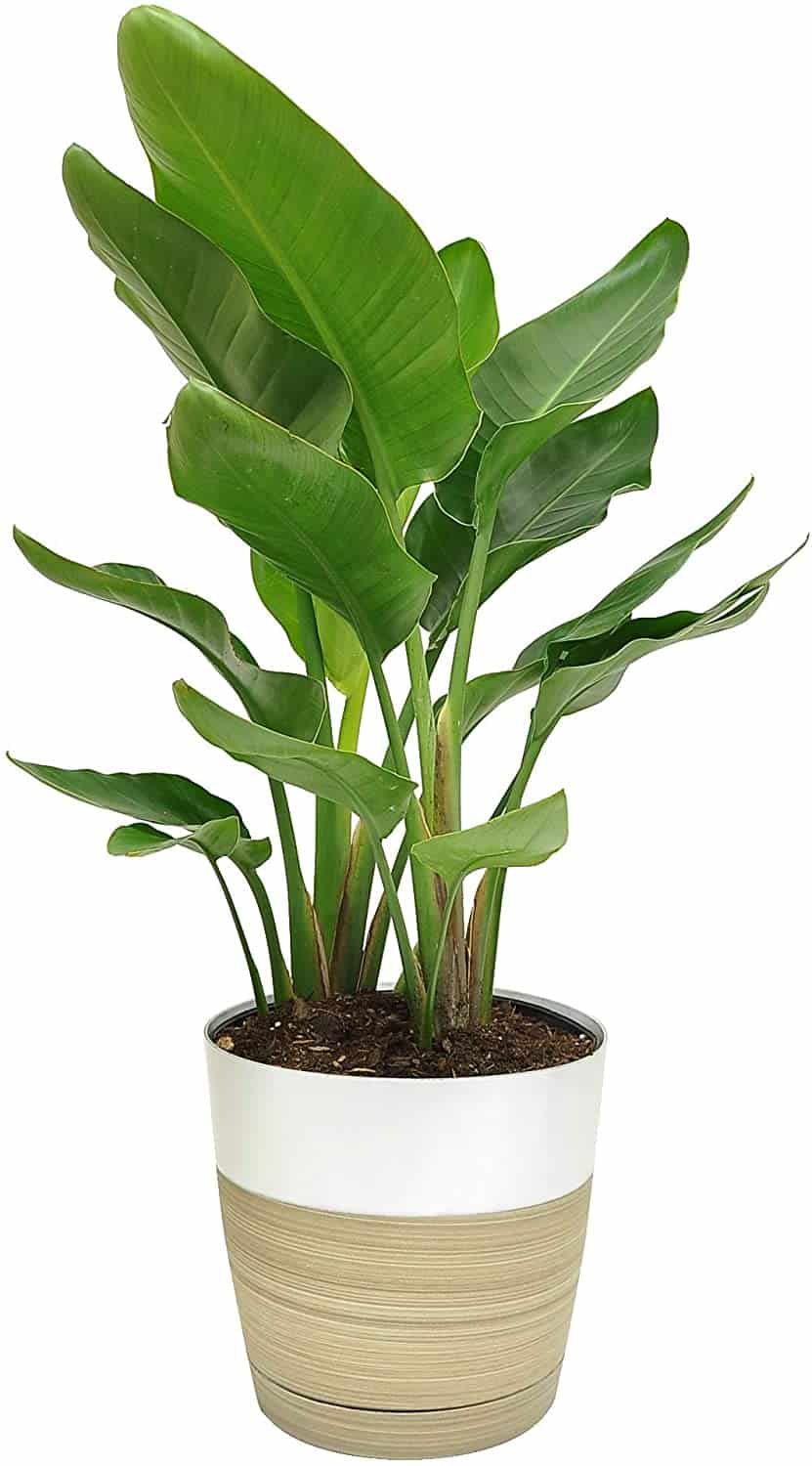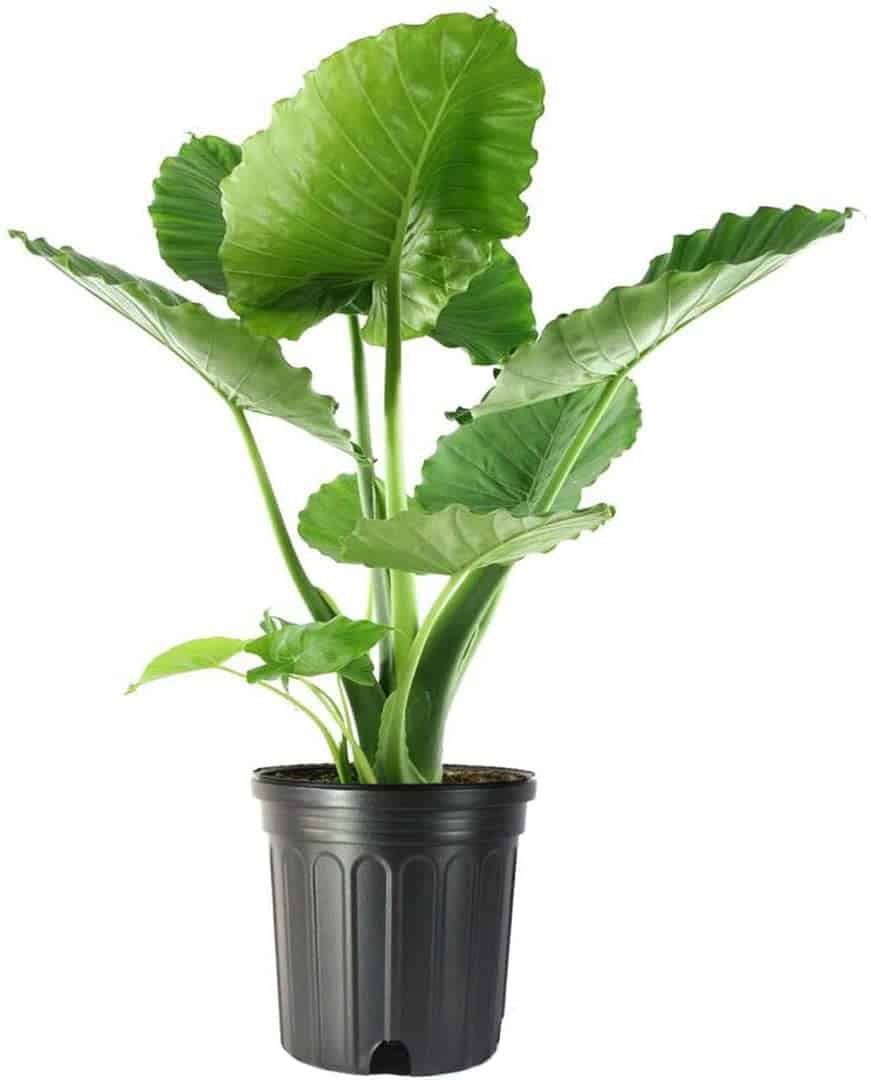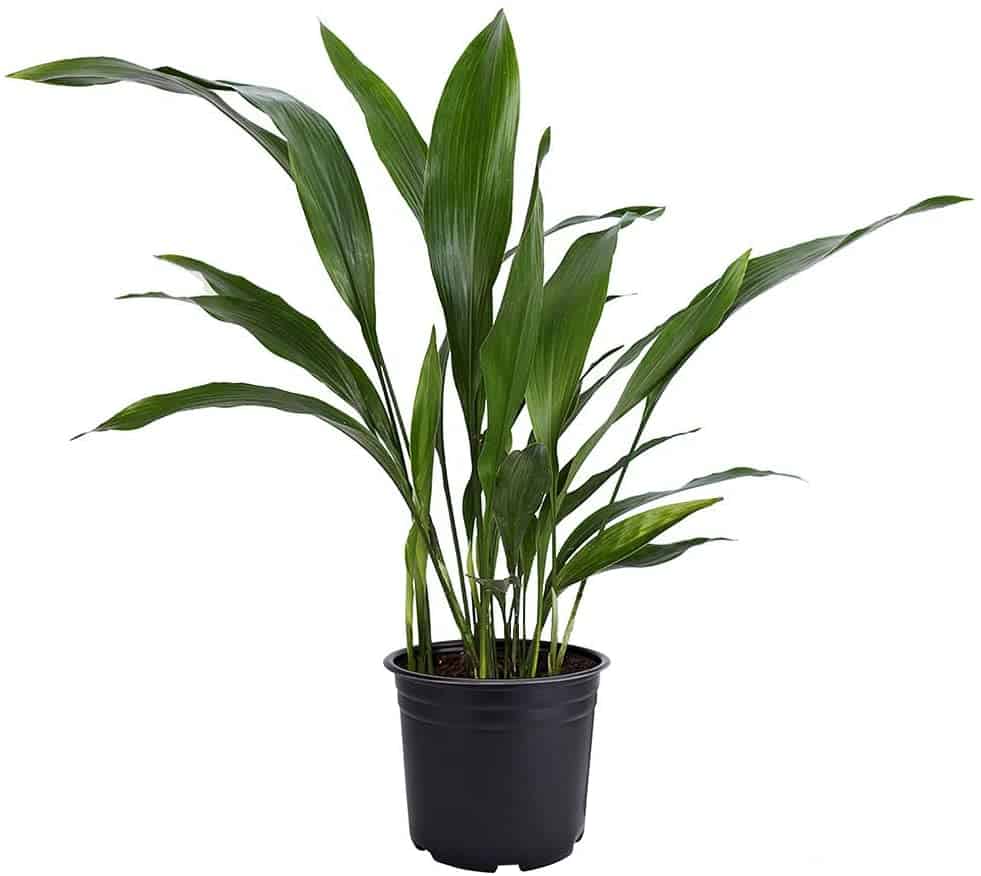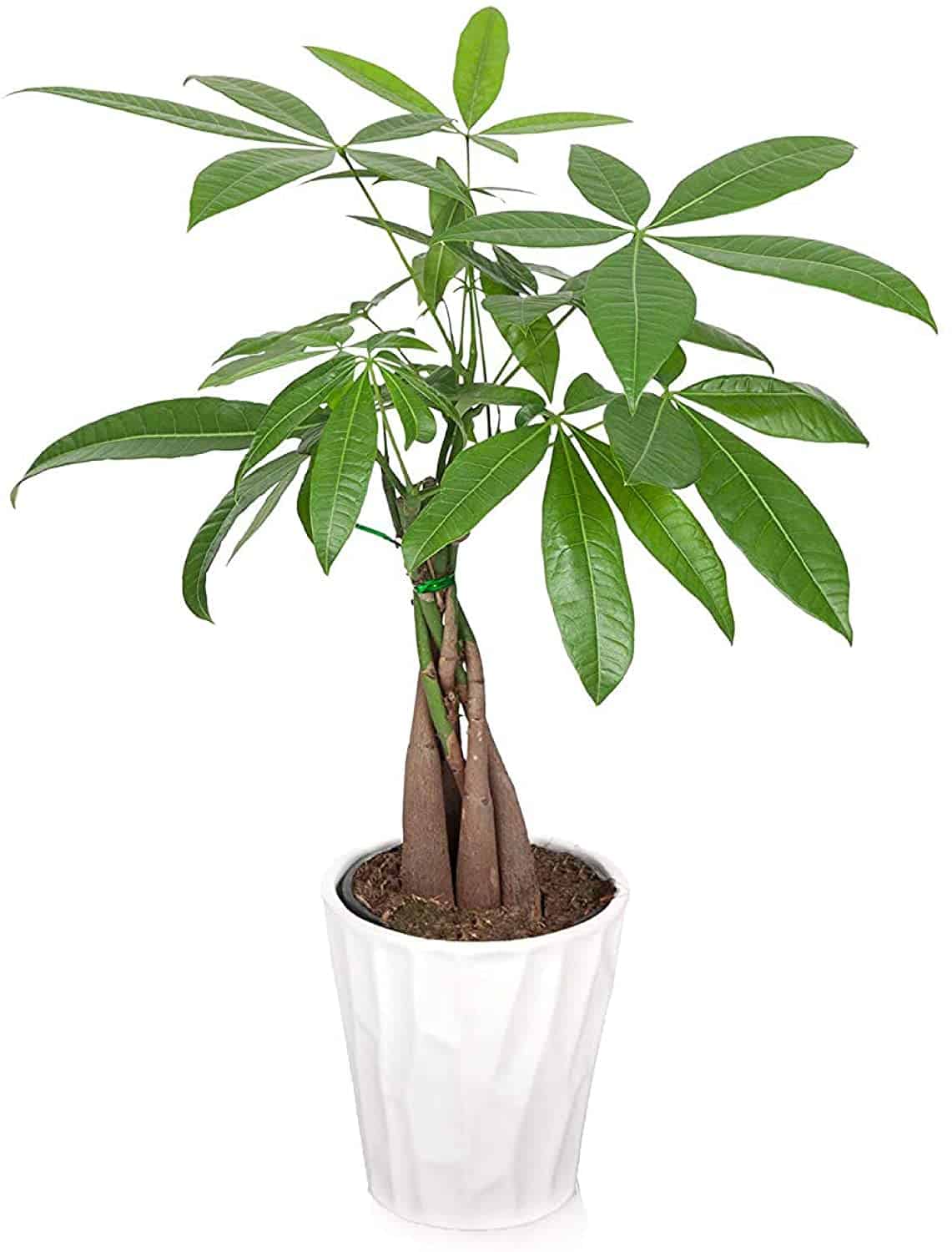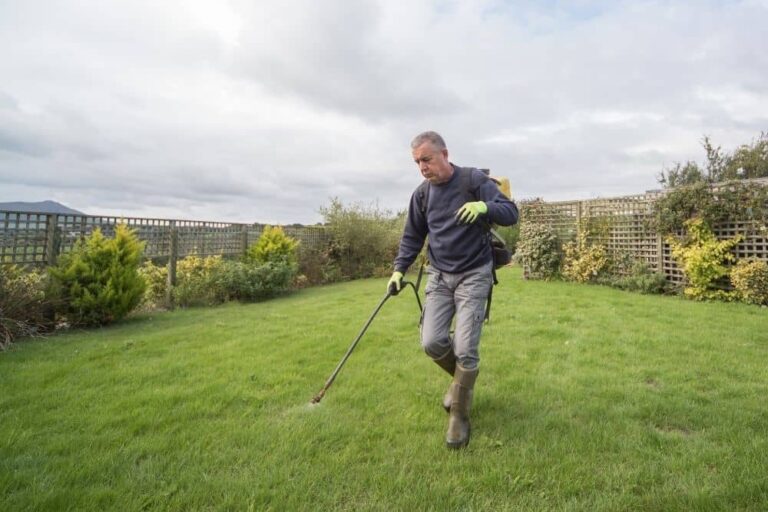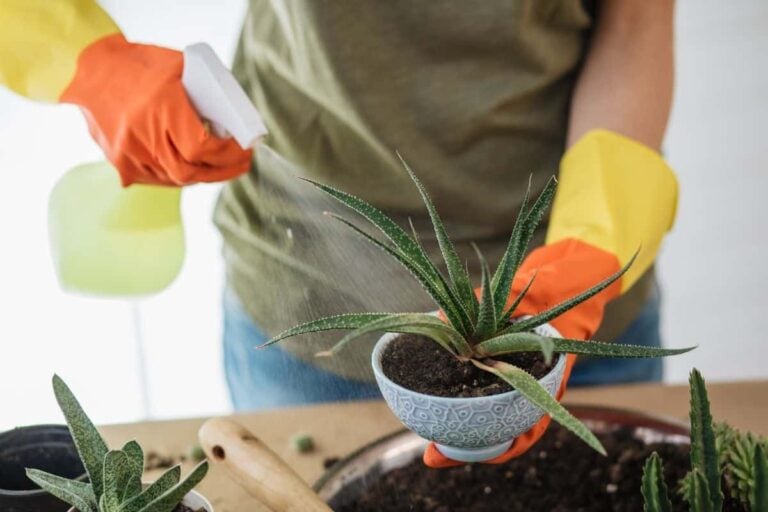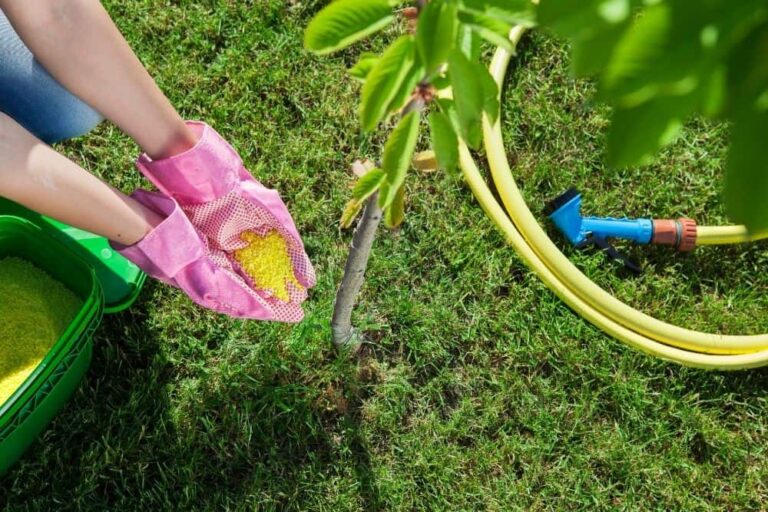10 Best Indoor Low Light Trees: Tall Plants that Don’t Need Sunlight
Having household plants around is always a bonus. They can lift your mood, give you something to take care of and work brilliantly as home decor.
With all of these positives, some can feel that it’s a massive shame when they have living conditions that don’t allow for enough sunlight to make plants thrive.
It’s important to surround ourselves with things that make us feel calm and happy, and plants such as trees can play a big part in that. Not having the freedom to decorate a space in the way you would like, or simply cultivate your love of plants can be frustrating.
Spending time in a dull room without anything to brighten it up doesn’t help to encourage positive feelings, and if your main reason for not having a plant in this room is a lack of sunlight, then you’re faced with a dim room too.
Plants are absolutely brilliant if you need to add a bit of life to a dim, colorless room – but the last thing anyone would want to do is buy a plant to add a bit of life to a room, just to watch it wilt instead.
If you don’t have an extremely well-lit home or office, you don’t have to worry – you can have your own little piece of nature, too.
The range of plants out there is huge, and luckily, some don’t necessarily require as much sunlight as others, making them a perfect fit for your interior needs.
Not only will these trees be perfect for adding a pop of life and color to your home or office, but some of the plants in this list will be amazing for other uses as well, such as odor control.
[wptb id="508462" not found ] AT A GLANCE: 10 Best Indoor Low Light TreesCat Palm Tree
Corn Plant
Fiddle Leaf Fig Tree
King Sago Palm Tree
Sansevieria Trifasciata Laurentii
Rubber Tree
White Bird of Paradise
Alocasia Elephant Ear
Cast Iron Plant
Money Tree
1. Cat Palm Tree
If you’re looking for indoor, low-light trees or tall plants, then a cat palm would be a good contender for your chosen house tree. This gorgeous palm tree is dark green with leaves that fan out, perfect for adding that natural touch to any environment.
Light Requirements
Cat palms are brilliant indoor plants, as they thrive in light that is neither indirect or direct – meaning, you don’t need a huge amount of sunlight to keep this plant happy. As long as you can set this tree near a window, you should be good to go on the sunlight front.
Watering
When watering this plant, you should keep in mind that it prefers moist soil, and does not do well in dry soil conditions, so you should try to ensure that a cat palms’ soil stays moist, consistently.
You should also make sure not to water it too much, however, as too much water can lead to root rot.
To be on the safe side, check your tree’s soil regularly, to ensure that its soil is maintaining that optimal level of moisture.
A soil that allows for good draining, such as a mix of peat moss, potting soil, and perlite, will be perfect for a cat palm Tree, as a well-draining soil helps to avoid sitting water and, as a result, can help to prevent root rot.
Temperature and Humidity
The cat palm tree enjoys warmer climates – but not too warm. Cat palm trees prefer temperatures around 80 degrees Fahrenheit during the day, and around 45 degrees Fahrenheit during the night.
Ensure that you have a humid environment if possible, as these trees prefer an environment with a humidity of around 55 percent.
Additional Points
This plant will help to keep your air free of odors and pollutants, as it is known for its air-purifying abilities and is classed as a ‘Clean Air Plant’ by NASA.
Pros
- Perfect height – can grow up to six feet tall
- Air purifying plant – clean, odor-free air
- Great decor – the cat palm tree will look amazing in your home
Cons
- Takes a while to grow
- Needs moist soil at all times
Also available to purchase at:
2. Corn Plant
The corn plant is known for how low-maintenance it is, and is the ideal plant for a beginner to look after. As a result of its ability to cope with low-light indoor environments, combined with the fact that it doesn’t require a lot of water.
The corn plant is also an excellent air-purifying plant and is great for lowering bad odors, as well as filtering air and improving air quality.
Light Requirements
Whilst this plant prefers indirect, but bright light, it will also tolerate low-light conditions, and does great indoors, especially with fluorescent lighting.
Temperature and Humidity
Try to aim for an indoor temperature of somewhere between 70 and 72 degrees Fahrenheit with a corn plant. This will give it the best chances of flourishing within its indoor environment.
Watering
When it comes to watering, you should aim to water it regularly, however, this plant prefers for you to wait for its soil to dry slightly, at least on the surface, before rewatering.
This usually takes around four to five days, so this is a good regularity in which to water your corn plant – but only using a little water is absolutely key here. The best way to look after this plant is to use a water mister to mist its leaves with water every so often.
Additional Points
If you want to go above and beyond with your upkeep of this plant, you might choose to give it a feeding of liquid fertilizer once every two weeks, which can give it a boost and really help it to thrive.
It’s a good idea to fertilize this plant around twice a year, either way.
It should be noted that the corn plant can be toxic to certain animals, such as cats and dogs, and making sure that these animals do not have access to it is something that you may want to consider.
Pros
- Low maintenance – the corn plant is perfect for beginners
- Grows tall indoors – able to grow six feet tall indoors
- Air purifying – will help to control bad odors and improve air quality.
Cons
- Toxic to cats and dogs
Also available to purchase at:
3. Fiddle Leaf Fig Tree
A fiddle leaf fig tree is a brilliant indoor plant, as not only does it look pretty awesome, but it’s also air-purifying.
Light Requirements
This tree is actually perfect for a room without direct sunlight, as the fiddle leaf fig tree doesn’t enjoy being exposed to too much of it.
Exposing fiddle leaf fig tree’s to too much sunlight can cause them to lose their leaves – you should be careful with this, however, as too little light can also have the same effect.
For best results, try to place your fiddle leaf fig tree near a window, preferably facing any direction other than north. This will ensure that it gets the perfect level of sunlight, to really help your fiddle leaf fig tree thrive.
Temperature and Humidity
These trees prefer climates that resemble the rainforests that they come from. Because of this, humid climates with temperatures somewhere between 65 and 75 degrees Fahrenheit are ideal for these plants.
Ensure not to allow the room you keep your fiddle leaf fig tree in to fall below 50 degrees Fahrenheit, to prevent brown spots and to keep your tree as healthy as possible.
Watering
Ensuring that you are regularly misting this tree’s leaves for hydration, as well as giving it a good wiping down with a sponge to keep it clean. These are both important steps of the upkeep of this plant.
The fiddle leaf fig tree prefers to be misted, as this mimics the way that it would receive water in the humid environments of the rainforest.
As a result of this, it is also important to ensure that you aren’t misting it too much, as this can lead to overhydration and other problems, such as root rot. Make sure that the soil is moist, but not soggy.
Additional Points
Fiddle leaf fig tree’s appreciate a high nitrogen fertilizer throughout the year, and this can help to give it the boost that it needs, especially in a room without too much sunlight.
It’s important to re-pot this tree into a larger pot when it outgrows its container, to keep it healthy.
Pros
- Prefers indirect light – will tolerate low-light conditions
- Air purifying – works against bad odors and improves air quality
- Great for interior decor – looks amazing inside the home or office
Cons
- Doesn’t like temperatures below 50 degrees Fahrenheit
Also available to purchase at:
4. King Sago Palm Tree
The King Sago palm tree looks brilliant, but it’s also a great plant for beginners. This is because this amazing plant can withstand a lot – it’s been around a long time for a reason, as this plant can be traced back even as far as prehistoric times.
Light Requirements
For the most part, this plant is super easy to look after. The King Sago palm tree prefers bright light, but thanks to its hardiness, will survive in low-light environments too.
Temperature and Humidity
Sago palms enjoy high humidity and can survive in temperatures between 15 and 110 degrees Fahrenheit – although, they would probably prefer a temperature somewhere in the middle of these extremes.
Watering
The main thing that this plant is fussy about, is the way in which it is watered.
Firstly, this plant prefers well-draining soils, to ensure that the water can flow evenly throughout and it doesn’t result in any blockages, causing your King Sago to soak up loads of water.
Secondly, is how regularly (and how much you decide to water it. Ensuring that you don’t water your King Sago palm tree too much is important, as overwatering is something that this plant does not like.
Overwatering this plant can easily cause it to develop root rot as a result of sitting in water for a long time, and this can kill your plant, so it’s important to avoid doing this.
You can ensure that this doesn’t happen by checking the soil of the plant to ensure that it has dried out slightly since the last time that you watered it and making sure that you don’t water it super often.
Pros
- Great plant for beginners – easy to care for
- Around since the prehistoric times – hard to kill
- Tolerates low-light environments – can be kept indoors
Cons
- Fussy watering requirements
Also available to purchase at:
5. Sansevieria Trifasciata Laurentii
This tall plant, also known as “the mother-in-law’s tongue”, has vibrantly colored and patterned leaves, making it a brilliant pop of color in absolutely any room.
The sansevieria trifasciata laurentii is another air-purifying plant. This means that this plant will be amazing at helping to keep your inside air clean – free of both odors, and other pollutants that might cause health issues.
Light Requirements
This plant is perfect for a room that doesn’t receive much sunlight, as it doesn’t require much sunlight. As long as there is a source of light, for the most part, this hardy plant should be okay.
Temperature and Humidity
Try to keep your sansevieria trifasciata laurentii somewhere between 60 and 75 degrees Fahrenheit. It’s best to try to prevent this plant from being exposed to extremes in temperature and particularly dislikes the cold.
Watering
To water this plant correctly, you should make sure to allow its soil to dry completely in between waterings. For best results, use well-draining soils with this plant as these will help to prevent health issues such as root rot, which often occurs in plants left to sit in water, or soil that is too damp for them.
Additional Points
Filters toxins such as formaldehyde and benzene from the air, even at night.
This plant can be slightly toxic when ingested and should be kept in a space secure from both children and animals.
Pros
- Air-purifying – lowers levels of carbon dioxide
- Doesn’t need much sunlight – perfect for rooms with small windows
- Vibrant – can add some color to a dull environment
Cons
- Toxic – should be kept out of reach of both children and animals
Also available to purchase at:
6. Rubber Tree
When indoors, rubber trees can grow as high as ten feet tall – and sometimes even taller. They grow outwards as well as upwards, so you can depend on your rubber tree for a beautiful splash of greenery in a dim room.
Light Requirements
The rubber tree prefers bright, but indirect light, but can tolerate being kept in lower light settings. The tree does best when placed near a south-facing window with sheer curtains to help to protect it from some of the heat, as rubber trees are prone to scorching if overheated.
Temperature and Humidity
For best results, try to keep this plant out of draughty areas. This is because it doesn’t do well with sudden temperature drops, which can be caused by things such as cold wind.
The rubber tree prefers temperatures between 60 and 75 degrees Fahrenheit, and high humidity environments are ideal.
Watering
Keep this plant moist – ideally, water your rubber tree at least once a week in the spring and summer and once every two to four weeks in the fall and winter.
Check the soil to ensure that it does not get too dry, but also ensure that you don’t overwater this plant as overwatering can also cause issues.
Spritzing or wiping the leaves with a wet cloth is the best course of action with a rubber tree, and ensures that you provide it with an ample amount of water. In instances of overwatering, the rubber tree’s leaves will turn yellow/brown and may fall off.
Additional Points
Rubber tree leaves have anti-inflammatory properties and can be used to treat ailments such as skin rashes by mashing some leaves into a paste, before applying this paste to the rash.
This tree is also great for people with allergies, as it doesn’t produce pollen.
Keep this tree away from pets and children, as the sap can be mildly toxic when ingested.
Pros
- No allergens – does not produce pollen
- Anti-inflammatory – treat skin rashes
- Easy to grow – ideal for beginners
Cons
- The sap is mildly toxic – keep out of reach of children and pets
Also available to purchase at:
7. White Bird of Paradise (Strelitzia Nicolai)
The white bird of paradise can grow up to twenty feet tall – but in an office or a house would be more likely to grow anywhere between 3 feet and eight feet tall, as a result of the space they have to grow in.
Light Requirements
The white bird of paradise is a hardy plant, and whilst it prefers to have some sun, it can adapt to a range of light conditions and it will do absolutely fine in a room with low light.
Temperature and Humidity
It’s best to keep this plant in a room with a temperature somewhere between 65 and 70 degrees Fahrenheit.
Whilst a white bird of paradise prefers a more average temperature, it is able to withstand temperatures as low as 24 degrees Fahrenheit – but only if temporary, as these low temperatures can damage the plant, and the plant may die if it’s kept at that temperature for too long.
Watering
You should make sure to water your white bird of paradise every one to two weeks – although it’s important to avoid watering, which can lead to overhydrating.
Make sure to check the soil before watering each time to ensure that the top few inches of the soil have had a chance to dry out slightly – but don’t wait so long that the soil underneath isn’t moist, as this can lead to dehydration.
Additional Points
White birds of paradise benefit from being misted with water and wiped down with a cloth, as this helps to clean the dust-prone leaves of the plant.
This plant is also considered a great plant for people that suffer from allergies, as it does not produce any pollen.
It is important to note that this plant can be toxic to animals such as cats and dogs, and you should make sure to keep it out of reach to avoid ingestion. If ingested, your pet can become sick and will need to see a veterinarian.
Pros
- Adaptable – can be kept in a range of light conditions, including low-light
- Hardy – can withstand extreme temperatures temporarily
- Grows to your space – can grow anywhere from three feet to twenty feet tall
Cons
- Toxic to pets
Also available to purchase at:
8. Alocasia Elephant Ear
The alocasia elephant ear gets its name from its beautiful leaves and can grow up to eight feet tall. This huge, vibrant plant is perfect for brightening up any space. They’re also air-purifying plants, ensuring that the air you breathe is nice and clean.
Light Requirements
Alocasia elephant ears are happy to grow in both the sun and the shade, so your elephant ears should do well when kept inside.
Temperature and Humidity
This plant prefers to be kept in warm temperatures of somewhere between 65 and 75 degrees Fahrenheit. Elephant ears also thrive in humid conditions and actually prefer a humidity of around 50-60%.
Elephant ears don’t like sudden temperature changes, and these, alongside cold drafts, should be avoided.
Watering
This plant prefers to be kept slightly moist at all times, but not so much that they become waterlogged. To keep them at their ideal moisture level, you should check the soil regularly, and aim to give your plant around two to three inches of water per week in the summer, based on how dry the soil is.
Alocasia elephant ears need to be watered less in the winter than in the summer, to prevent overwatering.
Additional Points
This plant is really toxic and poisonous, so make sure to take relevant safety precautions when handling the plant – for example, with gloves, and making sure not to allow it to come into contact with your skin, as it can cause irritation.
You should also ensure that it is not ingested, and keep it out of reach of both animals and children.
Pros
- Grows up to eight feet tall – perfect for large spaces
- Can grow in the shade – happy to be kept indoors
- Air-purifying – will keep your air clean and free of odors
Cons
- Toxic
Also available to purchase at:
9. Cast Iron Plant
The cast iron plant grows up to four feet tall, and this, combined with its width, gives the plant a nice presence that can help to fill a room.
Light Requirements
This plant is perfect for indoor environments, as it prefers lower light levels, thriving in low to moderate light. In fact, too much sunlight can burn its leaves, so it’s best to keep this plant away from bright, direct light.
Temperature and Humidity
The cast iron plant is really easy to grow when it comes to temperature and humidity, as it is really adaptable. Whilst this plant enjoys a humid environment, similar to its native rainforest, it can grow in dry indoor conditions quite well.
Watering
It’s important to keep this plant’s soil moist, in order to ensure that the cast iron plant doesn’t dry out too much – although, like with many plants, if the soil becomes too wet, it can cause this plant to develop root rot, which can lead to a loss of nutrients and yellowing leaves.
It’s important to test the soil before watering to make sure that it has slightly dried out, to avoid overwatering.
Additional Points
Cast iron plants are known for how slow they grow, but they live quite long as a result!
Pros
- Adaptable – enjoys both dry and humid environments
- Prefers low-light – perfect for your indoor needs
- Lives a long time – you can keep this plant for years
Cons
- Slow grower
Also available to purchase at:
10. Money Tree
Money trees can add some luck to your space, as well as some well-needed greenery. This indoor tree is surprisingly easy to care for despite its tropical look.
Often you’ll find these plants braided – this is the result of two or more plants having their trunks loosely woven together when in their sapling stage, creating a beautiful living art piece.
Light Requirements
While money trees enjoy a mix of direct and indirect sunlight, they are particularly great for office spaces as they do well under fluorescent light.
If your light source is natural, it may be worth considering rotating your plant every so often to avoid scorching, as the plant may receive too much direct heat from the sun-facing side.
Temperature and Humidity
Whilst the ideal temperature for this tree is somewhere between 65 and 75 degrees Fahrenheit, the money tree is hardy enough to handle temperatures 10 degrees above and below these thresholds when necessary.
The bathroom could be a great choice for a money tree as they thrive in humid environments.
Watering
Try to give your money tree a generous watering once every one to two weeks. You should make sure to let the soil dry in between watering to avoid root rot.
These plants need more regular watering depending on the amount of sunlight that they receive – in direct sunlight, you should water them more regularly, just ensure not to over hydrate them.
Additional Points
Whilst it might not actually grow money, the braided trunks are thoughts to “tie in” good fortune and prosperity.
Often the trees’ leaves grow in clusters of five, which is a significant number in its native country of China. The five leaves represent the five elements in Chinese philosophy: water, wood, fire, earth, and metal.
The money tree is another air-purifying plant and removes harmful toxins from the air, such as trichloroethylene and benzene.
Pros
- Air purifier – remove toxins such as trichloroethylene and benzene
- Exotic look – popular for its braided trunks.
- Great for a wide range of spaces – can grow under fluorescent light
Cons
- Prone to scorching in natural light
Also available to purchase at:
Buyers guide
Tree Height
When choosing a tree or tall plant for your space, it’s important to take the amount of space you have into account when buying.
Not only will a plant that is too large clutter your space up, but not having enough room to grow can cause your plant health issues and prevent it from thriving as much as it could otherwise.
Your idea of tall might vary based on the space that you are working with, so it is important to remember that plants can reach varying “taller” heights that could either constrict or be perfect for your space.
For example, a smaller room may benefit from a taller plant that is around four feet tall, whereas a larger room may prefer a much bigger one.
You should also take a taller plants access to lighting into account when choosing one – whilst this list is based around plants that can be kept in low-light.
If the small amount of light is completely inaccessible to this plant, (for example, maybe the lighting is too close to the ground), your plant may not be able to flourish as well as previously expected.
Maintenance
Maintenance can vary, depending on the plants, and it’s important to take your chosen tree or tall plants’ particular care requirements into account before purchasing.
Whilst sunlight may not be as much of an issue, your plant may require different types of fertilizer throughout the year, varying amounts of water to other plants, or even maybe a different style of watering – for example, certain plants prefer to be top-watered, whereas other plants prefer to be bottom-watered.
There are even some plants that prefer to be misted, so paying attention to this is really important, as not enough water can lead to dehydration and yellowing, whereas too much water can cause complications such as root rot, and a lack of nutrient flow throughout the plant.
Making sure to keep an eye out for any changes in your plant, (for example, discoloration, wilting, and pests) can allow you to intervene and provide your plant with the care it needs before the problem gets out of hand.
Ensuring to re-pot plants that have outgrown their containers can also go a very long way in helping plants thrive for as long as possible.
Pets
Looking into whether your chosen plant or tree is potentially toxic or poisonous to any animals that frequent the space you are going to keep it in is extremely important.
Certain plants are incredibly toxic to certain types of animals, and making sure to only keep plants safe for your furry friends to interact with within your home is the best way to ensure that your pets are kept happy and healthy.
Doing research into which plants are safe, or at the very least keeping any plants that are toxic to your pets in an area that is secure and inaccessible to your animals will help to ensure that you don’t have to face any unexpected veterinary fees.
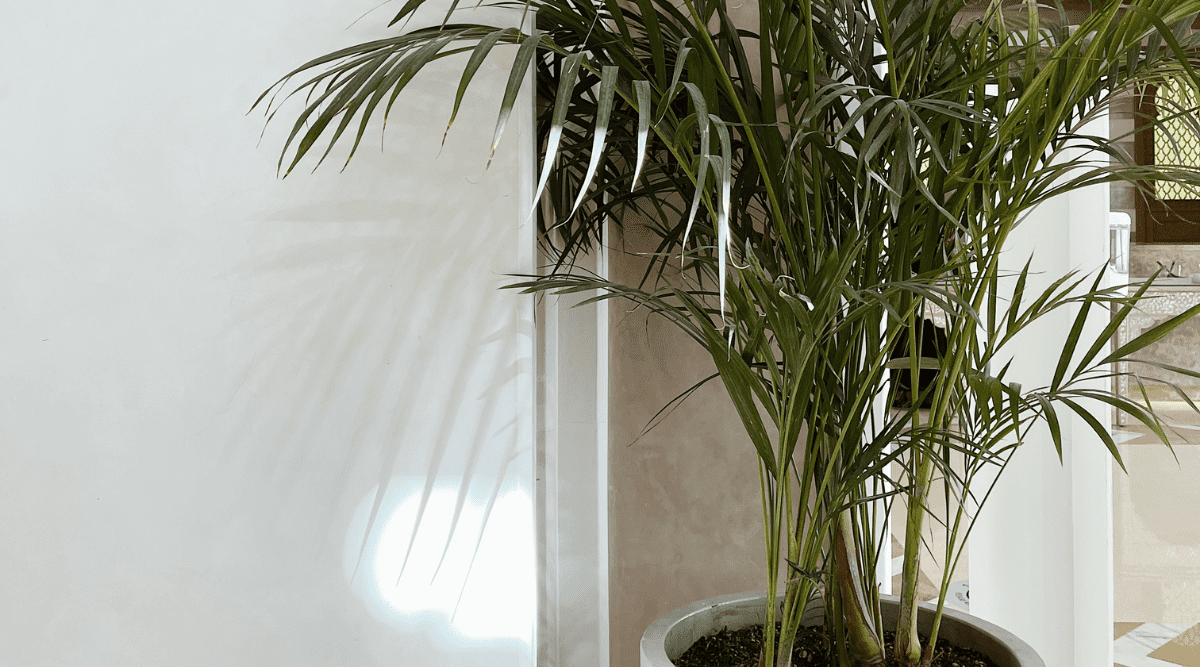
Frequently Asked Questions
How Often Should I Water My Plant Or Tree?
Different plants will require different amounts of water, depending on their preferred environments.
Whilst researching the amount and regularity that you need to water your plant is important, a general rule of thumb is to ensure that you aren’t underwatering or overwatering your plant by checking the soil, as this can give you a good indication of when your plant needs watering.
Often, you can tell a plant is ready to be watered because the first few inches of its soil are dry. Checking before watering can help you to avoid overwatering.
Can I Keep A Tree Indoors?
Yes! There is a large range of trees and tall plants that can be kept indoors – some of which are featured in our article above! All plants require different things, but luckily, some plants require things that can be provided indoors too.
As long as your plant can tolerate the levels of light, humidity, and temperature of your home, it will be just fine. Giving it a boost of fertilizer every now and then will also help to ensure that your plant is given every chance it needs to thrive.
If you intend on keeping a tree or tall plant indoors, it’s important to consider the size that they will grow, along with the size of the room you intend to keep it in. Often, plants are only able to grow within the space that they are kept, so if you keep your tree in a small room, it may not grow as tall as you expected.
How Much Light Do Indoor Trees Need?
The amount of light that your tree will need very much depends on the type of tree it is, and its place of origin.
Different plants have adapted to thrive better in varying degrees of light, meaning certain trees might choose to grow in the shade, making them ideal for growing indoors, whereas other trees will prefer a lot more sunlight.
You can vary the amount of sunlight your tree receives by controlling how close it is to the window, which window you place it near (does the window receive a lot of sunlight, or less?), and whether you close the curtains or not.

